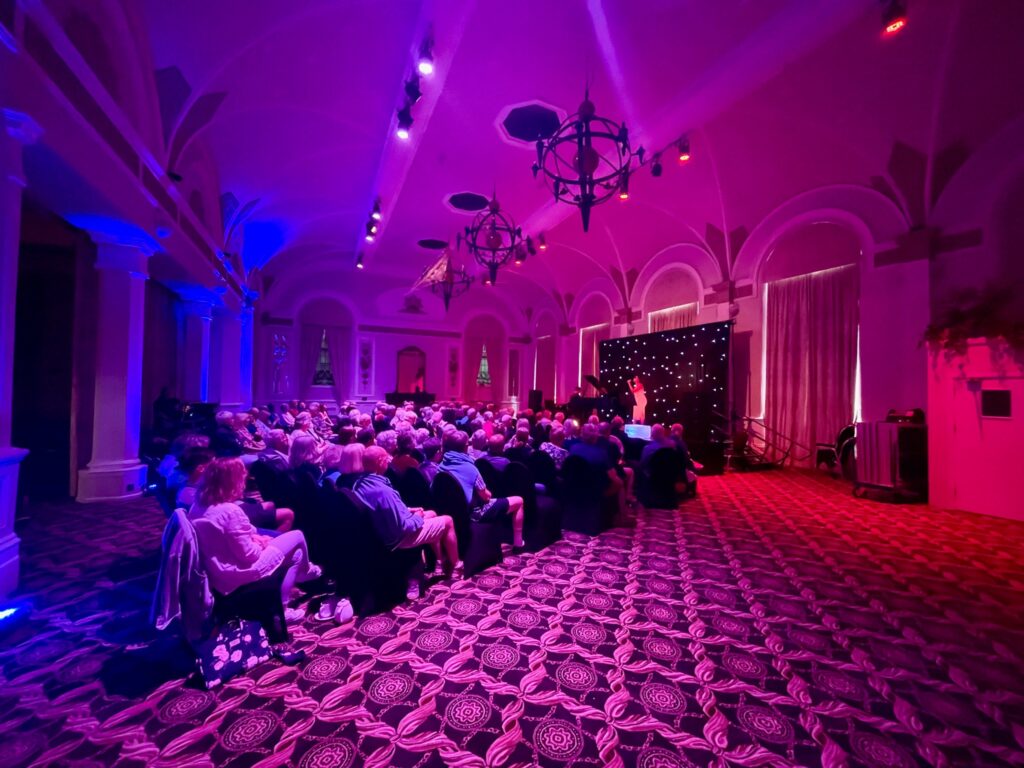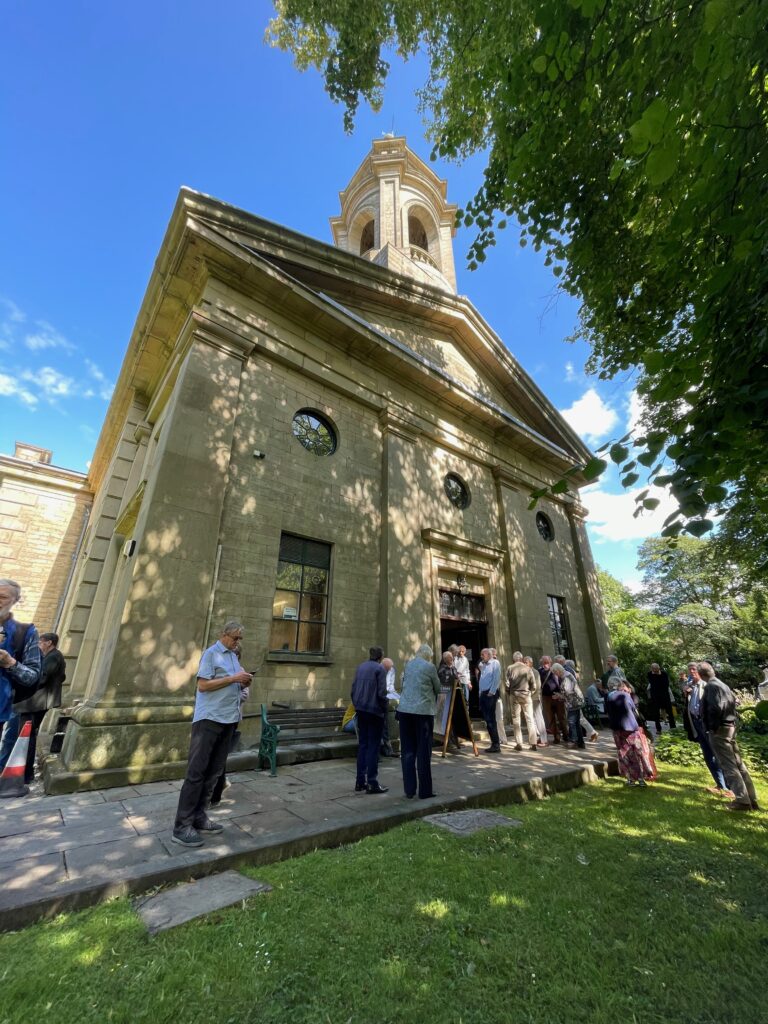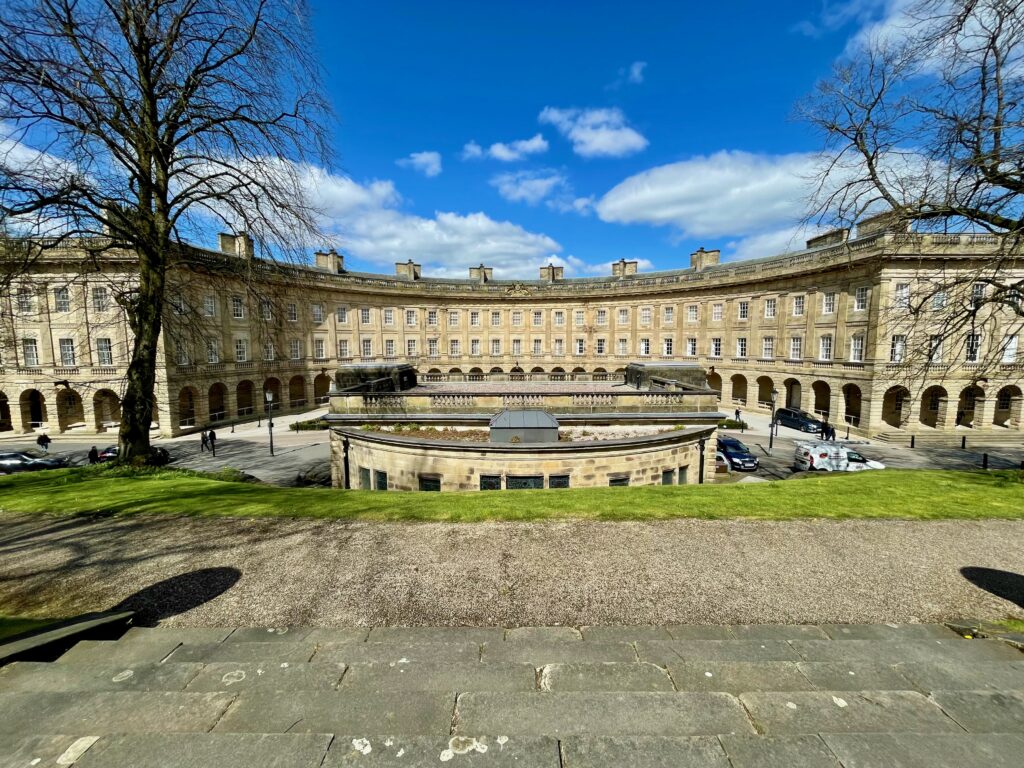From the majesty of the Buxton Opera House to informal music in the Pavilion Gardens bandstand, the Buxton International Festival unfolds against a backdrop of spectacular venues in the heart of the Peak District.
Buxton Opera House

Our flagship venue is the Buxton Opera House, which has hosted the Festival since it began in 1979. The theatre was designed by renowned architect Frank Matcham in his signature style, opening in 1903 with a specially written performance.
Buxton Opera House is considered one of Frank Matcham’s finest works; although there is no official record documenting the exact number of theaters the architect was involved in, it is estimated that he designed a minimum of 80 theaters and undertook renovations for numerous others. Sadly, of these 80 theaters, fewer than 20 remain standing today.
In 2023, the Opera House showcased sell-out operas including Bellini’s La sonnambula and Mozart’s Il re pastore, as well as the brand new musical production about Buxton’s Vera Brittain The Land of Might Have Been. The theatre also and hosted outstanding music events including jazz royalty Wynton Marsalis and the fantastic classical violinist Nicola Benedetti.
Pavilion Arts Centre

Formerly known as the Paxton Suite, The Pavilion Arts Centre contains the oldest surviving theatre in Buxton. It was opened as the Entertainment Stage theatre in 1889 and has lived various lives, moving from performance space to cinema and back again, before being redeveloped in 2010. When the Buxton Opera House theatre was opened in 1903, the New Theatre as it was also known as in it’s early days was modified to show silent films and changed its name to the Hippodrome.
In 1932 the theatre reverted to a performance theatre and became The Playhouse.
In 1979 the venue was renamed again, as The Paxton Suite.
The theatre combines modern fixtures, including a cinematic-standard projector and sound system, while retaining original features, and houses intimate stage productions as well as Buxton Cinema.
The Pavilion Arts Centre is a Grade-II listed building. It was designed for the Buxton Gardens Company by local architect William Radford Bryden and was built of millstone grit stone by James Salt. The large shaped gables feature theatrical masks of comedy and tragedy. Bryden also designed the nearby Old Clubhouse (originally the Union Club) and Buxton’s famous landmark Solomon’s Temple (Solomon’s Temple can be seen on the horizon from Buxton Market Place and rewards walkers with glorious views of the town).
The majority of our books programme events take place in the Arts Centre, and highlights from 2023 included Baroness Catherine Ashton and Jonathon Kennedy with sell-out performances. Pavilion Arts Centre was also home to our sell-out opera, Handel’s Orlando.
The Palace Hotel

The Palace Hotel has been a Buxton landmark since 1868, overlooking the Georgian buildings that make up the heart of the town. Standout moments in the Palace’s history have included playing host to Mary Pickford and Douglas Fairbanks Jnr. when they came to see the famed ballerina Anna Pavlova, providing a health resort for Manchester United football team during the Matt Busby years, and now as the home of BIF’s popular Jazz programme!
Originally named The Buxton Hotel and built at a cost of £50,000 strategically constructed to accommodate the anticipated surge of travellers arriving via the newly established railways. Two identical and neighbouring train stations opened in 1863, both within two-weeks of each other.
Designed by Henry Currey, architect to the 7th Duke of Devonshire, the hotel also provided its guests with hot and cold water in each room, which was revolutionary and an advanced amenity during the late 18th century. After several years, the hotel became the first building in Buxton to be equipped with a telephone, a feature that was not only a luxury but rare in most hotels across Britain.
The festival-within-a-festival saw stand-out performances at The Palace Hotel from Ni Maxine, Tom Seals and Dale Stor as part of the Jazz at the Palace series.
Octagon Hall

Recent refurbishments have restored the Octagon hall to its Victorian glory, down to the original colour scheme! The hall is an integral part of Buxton cultural life, hosting craft fairs, concerts and the yearly Dickensian market at Christmastime – and in 1963 saw the Beatles take to the stage.
In this year’s programme the Octagon hosted the highly anticipated The King’s Singers as well as the hugely popular Buxton Festival Dance Band presents Music To Dance To – an opportunity which gave festival goers to show off your footwork and fancy moves! Waterstones as always made its home here in the Octagon entrance and the festival saw record book sales and busy book signings as part of our popular book talk series.
St John the Baptist

St. John the Baptist is a Regency church built through the patronage of the 5th Duke of Devonshire. Completed just before his death in 1811, it followed the Crescent Hotel and the Devonshire Dome as the last of the architectural work commissioned by the 5th Duke. The Tuscan-style church features a remaining Georgian window among the stained glass, and boasts a four-manual William Hill organ. St. John’s is the setting for our weekly Festival Masses, as well as opera Mansfield Park and oratorio Our Future in Your Hands. Music events include Fretwork viol consort, Christopher Stokes at the organ and 19-year-old pianist Jeneba Kanneh-Mason, as well as Jamal Aliyev, Charles Owen and Anna Dennis returning from 2021. In our participation programme this year we also have an opportunity to take part in Haydn’s The Creation, where experienced choral singers can join the Buxton Musical Society Chorus and Orchestra, featuring soloists from the Festival company, in performing the oratorio.
Crescent Assembly Rooms

The Crescent Assembly Rooms provide a window onto Buxton’s Georgian Spa history. The ballroom was restored as part of the recently completed renovations project and reopened last year, where BIF events included the Equinox Duo and literary talks from Rebecca Wragg Sykes and Martyn Rady. Beautiful period features include the stunning ceiling, supported by columns at either end, and the windows lining the east wall. The elegant setting perfectly complements the more delicate sounds of piano, woodwind, cello, accordian, harp and voice; appearing in this year’s programme are Colour My Song; the Delphine Trio; our Spotlight on Chethams event; Ryan Corbett; the Chroma Harp Duo; and Eleanor Corr and Emil Duncumb. The Assembly Rooms will also host a memorial event celebrating the legacy of one of the founders of the Festival, Malcolm Fraser.
Pavilion Gardens Bandstand

Song at Six will be returning to the Pavilion Gardens bandstand, filling the evening air with beautiful singing courtesy of the BIF Young Artists Programme. Drop by on the 8th, 10th, 14th, 15th, 20th, 21st, 22nd or 23rd July at 6pm for 15 minutes of song in the fresh air and picturesque surroundings of the Pavilion Gardens!
The full programme for the 2022 Festival is available here, with priority booking opening on the 1st March and public booking on the 29th March.

